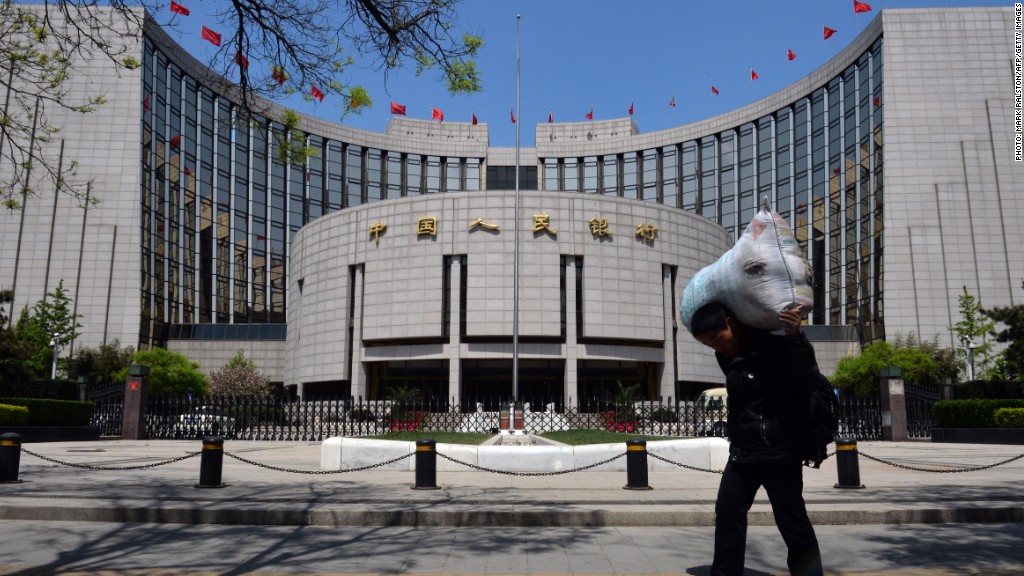
Banks in China are again lending each other money at lower rates after the country's central bank injected cash into the financial system in an effort to avert a credit crunch.
Rates for seven-day loans between banks dropped to around 5.5% on Tuesday, a significant drop from highs of 7.5% hit on Monday.
This is not the first time the People's Bank of China has been forced to take action to ease rates. In fact, it's become something of a pattern in recent months amid worries over the amount of easy money flooding through China's financial system.
Related story: China local government debt hits $3 trillion
What's going on here? It starts with an epic credit binge.
When the global financial crisis hit in 2008, the Chinese government ordered the credit lines open. Banks and other lenders responded, funding massive building and infrastructure projects.
The strategy worked, and China emerged relatively unscathed from the global financial crisis. But credit growth never really slowed down.
Analysts now worry that new credit is no longer generating strong economic returns. And, worse, the ballooning borrowing could sap growth if the central government is forced to stand behind defaulting local governments or agencies, through which much of the lending flowed.
Further adding to concerns, more and more credit in China is being issued by trust companies, securities dealers and underground operators that make up the loosely-regulated and opaque "shadow banking" system.
What is the central bank doing about it? This is where the credit crunch comes in.
The rates at which China's banks lend each other money have been extremely low in recent years -- something that helped fuel the shadow banking boom.
That's beginning to change, in no small part due to the People's Bank of China, which has periodically allowed rates to rise dramatically before warding off a credit crunch with a cash injection.
Higher lending rates should put the screws to lenders in the shadow banking sector. By allowing rates to rise, the central bank is encouraging lenders to be more responsible with their asset management strategies.
But the central bank must work to avoid a true credit freeze -- an event in which banks hoard cash and refuse to lend to each other. Nobody wants this.
Related story: China should bail out its shadow banks
Will the central bank's strategy work? Efforts to slow credit growth are playing out against a background of systemic change in China.
Beijing has pledged to allow market forces to play a bigger role in the economy, and the country is trying to promote domestic consumption while moving away from credit-fueled export growth.
There are some signs that the central bank's efforts are having an effect. While overall credit is expanding, shadow banking is growing at a slower pace.
But it is also clear that bank officials are walking a dangerous line. In late December, bank lending rates reached levels high enough to prompt serious questions about a credit freeze.
In effect, the bank's credit squeeze went too far, too fast, and freaked everybody out. The central bank finally responded with a cash injection, but not before bungling its signals to investors and banks.
The latest spike in rates shows that the central bank is not backing off its strategy, but it has made some changes to the way it telegraphs its intentions. The bank has, for example, started announcing its cash injections on Weibo, China's version of Twitter.


